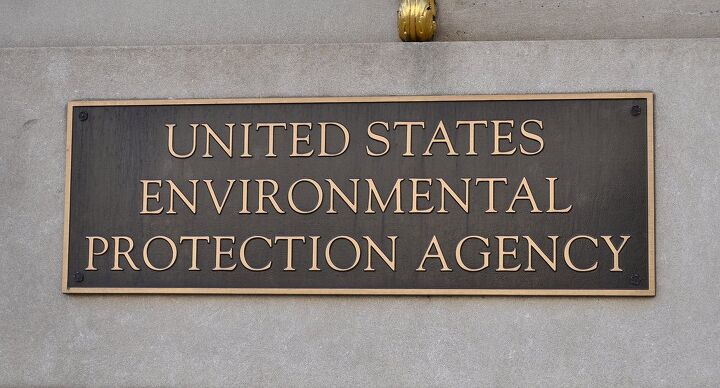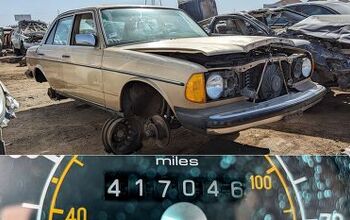Mission Inaction: EPA, Volkswagen, and Your Racecar

The temperature was already well above average on Friday, September 18 when the Environmental Protection Agency issued Volkswagen a steaming-hot Notice of Violation of the Clean Air Act. The seriousness and accuracy of the allegations are now well known. Emitting up to 40 times the allowable limit of nitrogen oxides is no small infraction, particularly when done with intent. And as a result, heads quickly rolled and resigned at the Volkswagen Group. The company continues to reel from the impact of its malfeasance as new penalties are imposed.
What has been going on at EPA Headquarters? Gina McCarthy was the agency’s Chief Administrator when the scandal broke. She is still in charge. Christopher Grundler has been at the EPA since 1980 and was the Director of the Office of Transportation and Air Quality (OTAQ) on that warm fall day. He too, remains at his post. Despite calls for resignations from lawmakers, such as Michael Burgess House R-TX, no senior EPA staffers are known to have been dismissed with cause related to the VW scandal.
The lack of individual accountability at the EPA and its failure to catch VW were predictable. Margo Oge, former Director of OTAQ, recently noted the agency’s budget has been cut more than 20 percent over the last five years. These budget cuts have had a deleterious impact across the agency. In-house expertise has been gutted, staffing levels reduced, enforcement degraded, and morale eviscerated. A yellow flag came out after VW’s infraction went public, in the form of Congressional hearings, but agency leadership was allowed to keep circling the course.
Heads may not be rolling at the EPA, but the agency can absolutely be counted upon to act like a large government bureaucracy. Its mission “to protect human health and the environment — air, water, and land” is necessary. But even its 15,000 idealistic employees are not enough to curb the $8 billion regulator’s natural tendencies. Those innate tendencies are the genesis of both the failure to catch VW, and the reason the EPA is taking a swing at the performance aftermarket.
Large bureaucracies do not reward risk-seeking behavior among employees. If you were working at the EPA prior to the VW scandal, were hired post similar scandals at Ford (1997) and the heavy truck manufacturers (1998), and suggested a raft of new emissions testing procedures like those being adopted now, you would have been escorted out of Mr. Grundler’s office. Mr. Grundler would have understood their value, but he has profit and loss responsibility and is trying to balance increasing regulatory demands with a downward tending budget. Moreover, proposed real-world testing procedures were the answer to a question nobody with authority was asking. This does not excuse he, his office, or his agency. But risk avoidance and under-funding contributed to why additional regulatory action, even in the light of countervailing information, was not taken prior to the VW scandal.
That’s right: the EPA knew prior to September 2015 that its emissions testing procedures were incomplete.
In 1995, the EPA’s Virginia Testing Laboratory developed an on-car emissions testing device. The ROVER was designed to test emissions compliance on cars in the real world. And it worked. However, the Virginia lab was shuttered in 2001, its technicians laid off, and the ROVER never pressed into systematic use. This does not form the kernel of a conspiracy theory; rather it underlines the predictable outcomes associated with the EPA’s contrasting objectives, namely, the promulgation and enforcement of emissions regulation in conjunction with the need to preserve itself.
Conservative groups, including a swath of Republicans in Congress, have called for the abolition of the EPA altogether. In fact, the agency was under fire long before it blundered into the public embarrassment of failing to catch one of the most significant emissions transgressions in history. If you were the EPA, what do you do? Unsurprisingly, the agency elected to move swiftly to protect itself. For example, in response to questions about deploying on-road testing devices like ROVER, Mr. Grunder has defended the agency saying, “[On-road testing] didn’t continue because it didn’t rise to the top of our priority scheme.” Improving testing procedures, though consistent with the agency’s mission, did not become a priority until political pressure intervened.
The best defense is often a strong offense. The agency is now flexing its regulatory authority in new ways. It’s most recent offensive is aimed at the automotive aftermarket. But this is an administrative action. It is entirely political. The agency seeks to “prohibit conversion of vehicles originally designed for on-road use into racecars.” But the EPA’s proposed rule clarification is about as threatening for enthusiasts as an Avalon at a stoplight.
Motor Trend’s Scott Evans accurately reported on the Specialty Equipment Market Association’s over-reaction to the EPA proposal in early February. In his coverage, which was summarily removed from the MT website (but available here), stated, “SEMA… is being paranoid and reactionary, shooting from the hip and making a mountain out of a molehill.” And as Mr. Evans goes on to say, the issue is complex. What is not complex are the facts that a) the rule clarification does not increase non-existent enforcement, and b) one of the worst transgressions the leadership of a federal agency can make is the elimination of private sector jobs by fiat.
Individuals and companies acting in their own self-interest will and do behave contrary to the common good. Humans impact the environment and climate. Thus we need an Environmental Protection Agency to regulate auto emissions and fend off the tragedy of the commons. The recent SEMA vs. EPA debate is healthy and part of our democratic process. However, the EPA’s recent action needs to be seen for what it is. Again, Mr. Evans:
“If the EPA’s intent is to eventually crack down on race car emissions, it would have a major impact on the motorsports we enjoy and participate in as well as the companies we buy performance parts from. The evidence, however, doesn’t yet support that conclusion.”
The EPA’s administrative action is, if menacing at face value, a virtually meaningless salvo. It’s the latest chapter in the embattled agency’s campaign to defend itself by reframing the public narrative. And it has largely succeeded, as evidenced by the media coverage here and elsewhere.
Scott Evans put it best: “The government is not coming for your race car.”
[Images: TexasGOPVote.com/Flickr, University of West Virginia]

Twenty year auto industry professional. Currently CEO at Turbo International, the premier American manufacturer of OEM replacement turbochargers for the global aftermarket.
More by Seth Parks
Latest Car Reviews
Read moreLatest Product Reviews
Read moreRecent Comments
- Drnoose Tim, perhaps you should prepare for a conversation like that BEFORE you go on. The reality is, range and charging is everything, and you know that. Better luck next time!
- Buickman burn that oil!
- Jkross22 Meant to ask.... what's the best oil to use in a popcorn popper? I've been wanting to try peanut oil, but can't find anything smaller than the huge container at smart n final.
- Ajla A union fight? How retro 😎
- Analoggrotto Finally, some real entertainment: the Communists versus the MAGAs. FIGHT!




































Comments
Join the conversation
“[On-road testing] didn’t continue because it didn’t rise to the top of our priority scheme.” Okay, thats great. Its like answering why you commited murder by saying: "I killed my wife because I stabbed her 14 times." No, thats not *why* you did it, its *how* you did it. Saying it didnt "rise to the top" of their priorities is how it failed to happen, not why. If it was already started, then stopped, there is a reason why, beit budget or a failure to realize how it can benifit the process. Typical government double talk. I sometimes wonder if there is a required class (to work or speak for a government agency) that teaches one how to use many, many words while saying nothing at all.
Excellent article. The analysis makes me wonder whether perhaps VW has been singled out by EPA; obviously, going after a domestic car maker would have been asking for political trouble for EPA.